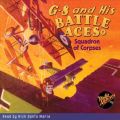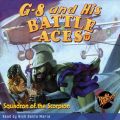
|
This study examines the transformation of the United States Navy as a fighting organization that took place on the North Atlantic Station between 1874 and 1897. At the beginning of this period, the warships assigned to this station were collectively administered by a rear-admiral, but were operationally deployed as individual units, each of whose actions were directed by their captains. By 1897 the North Atlantic, or “Home” Squadron as it was known, was a group of warships constituting a protean battle fleet – that is, an organized body moving and fighting in close-order, which meant that the actions of the captains were directed by a commanding admiral. The process of the development of an American battle fleet resulted in the construction of a new organizational identity for the North Atlantic Squadron. This process was as critical as the eventual outcome. It was not linear, but one in which progress in critical areas was modulated by conflicting demands that caused distraction. From 1874-1888, exercises in fleet tactics under steam were carried out sporadically utilizing existing wooden cruising vessels. From 1889-1894, the last wooden cruisers were decommissioned and the Squadron consisted entirely of new steel warships. Ad-hoc concentrations of vessels for purposes besides exercise and training retarded the continued development of doctrine and tactics necessary for a multi-ship fighting capability during this time. However, much work was done to develop a concept of multi-ship operations. From 1895-1897, the identity of the North Atlantic Squadron as a combat unit solidified. Tactical exercises were held that had specific offensive and defensive wartime applications. These exercises were necessary to develop a combat capability. The results of this study demonstrate that the United States government had an interest in developing an offensive naval combat capability as early as the 1870’s. Based on the record of the North Atlantic Squadron, it is argued that imperial aspirations, in the sense of possessing a capability to restrict the actions of other great powers in the Caribbean region, existed prior to the War of 1898. However, the process of change often resulted in the appearance of capability without the rigorous exercise necessary to possess it. Получить ссылку |
 Return of the Dambusters: What 617 Squadron Did Next
Return of the Dambusters: What 617 Squadron Did Next
Автор: John Nichol
Год издания:
Previously published as After the Flood.Former RAF Tornado Navigator and Gulf War veteran John Nichol sets out on a personal journey to discover what happened to 617 Squadron after the flood.The role RAF 617 Squadron in the destruction of the dams at the heart of the industrial Ruhr has been celebrated in book, magazine and film for more than seventy years.On the 17th May 1943, 133 airmen set out in 19 Lancasters to destroy the Mohne, Eder and Sorpe dams. 56 of them did not return. Despite these catastrophic losses, the raid became an enormous propaganda triumph. The survivors were feted as heroes and became celebrities of their time.They had been brought together for one specific task – so what happened next? Of the 77 men who made it home from that raid, 32 would lose their lives later in the war and only 45 survived to see the victory for which they fought.Few are aware of the extent of the Dambuster squadron’s operations after the Dams Raid. They became the ‘go to’ squadron for specialist precision attacks, dropping the largest bombs ever built on battleships, railway bridges, secret weapon establishments, rockets sites and U-boat construction pens. They were involved in attempts on the lives of enemy leaders, both Hitler and Mussolini, created a ‘false fleet’ on D-day which fooled the Germans, and knocked out a German super gun which would have rained 600 shells an hour on London.In ‘After The Flood’, John Nichol retraces the path of 617 Squadron’s most dangerous sorties as their reputation called them into action again and again.
 Squadron of the Damned
Squadron of the Damned
Автор: David Wright O’Brien
Год издания:
 Alphabet Squadron
Alphabet Squadron
Автор: Alexander Freed
Год издания:
 Squadron of Corpses - G-8 and His Battle Aces 7 (Unabridged)
Squadron of Corpses - G-8 and His Battle Aces 7 (Unabridged)
Автор: Robert Jasper Hogan
Год издания:
Out of the war-ravaged skies of France careens an uncanny new threat. German aces, shot down in flames only months before, are back with a vengeance-back from the dead! What can G-8 and his fighting wingmen, Bull Martin and Nippy Weston, do against this sinister Squadron of Corpses reanimated by Black Magic? Their flesh-ripping bullets have no effect on these disinterred pilots, and with each passing day, the enemy's unholy numbers grow. Never before has the Flying Spy faced such a foul foe. Nor has the Allied war effort seemed so doomed to abject failure. Is this G-8's darkest hour? Torn from the pages of the April, 1934 issue of G-8 and His Battles Aces magazine.
 Squadron of the Scorpion - G-8 and His Battle Aces 17 (Unabridged)
Squadron of the Scorpion - G-8 and His Battle Aces 17 (Unabridged)
Автор: Robert Jasper Hogan
Год издания:
Out of war-torn skies soars…G-8 and His Battles Aces! The greatest combat pilot of the War to End All Wars, G-8's true name was stricken from all official records. Flying a supercharged warplane, backed by his wild wingmen, Bull Martin and Nippy Weston, G-8 fought the most horrific foes the Kaiser could throw at him. His skin was green, his uniform was a suit of glittering armor and he came – so he said – from Mars. As he thundered through battle skies, only four men knew his strange mission, knew that he was riding a dynamite trail to carry out the most gigantic war scheme ever planned by a death staffel. Ripped from the February 1935 pages of G-8 and His Battle Aces magazine.
Чтобы скачать книгу, отключите блокировку рекламы. Спасибо!

 Squadron of Corpses - G-8 and His Battle Aces 7 (Unabridged)
Squadron of Corpses - G-8 and His Battle Aces 7 (Unabridged)
 Squadron of the Scorpion - G-8 and His Battle Aces 17 (Unabridged)
Squadron of the Scorpion - G-8 and His Battle Aces 17 (Unabridged)


